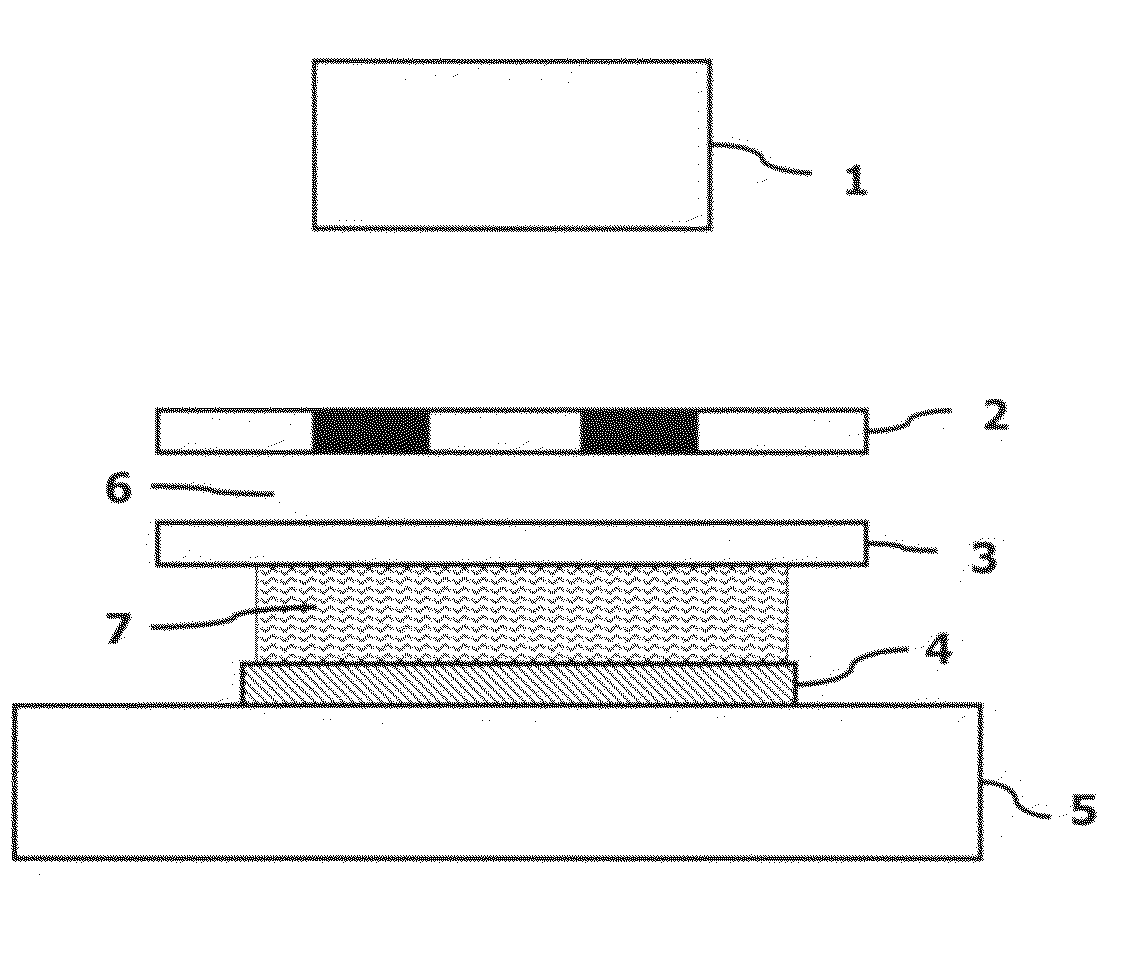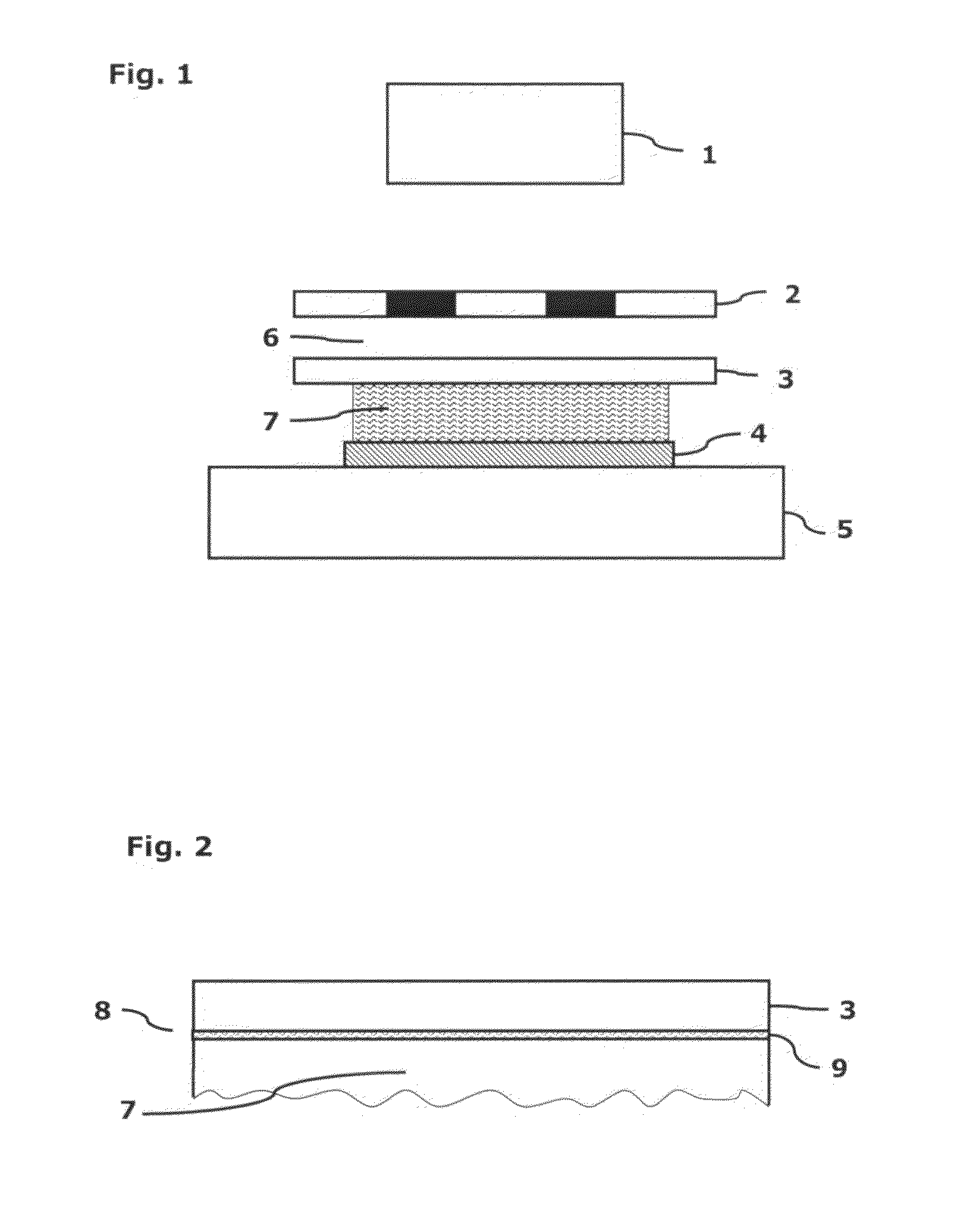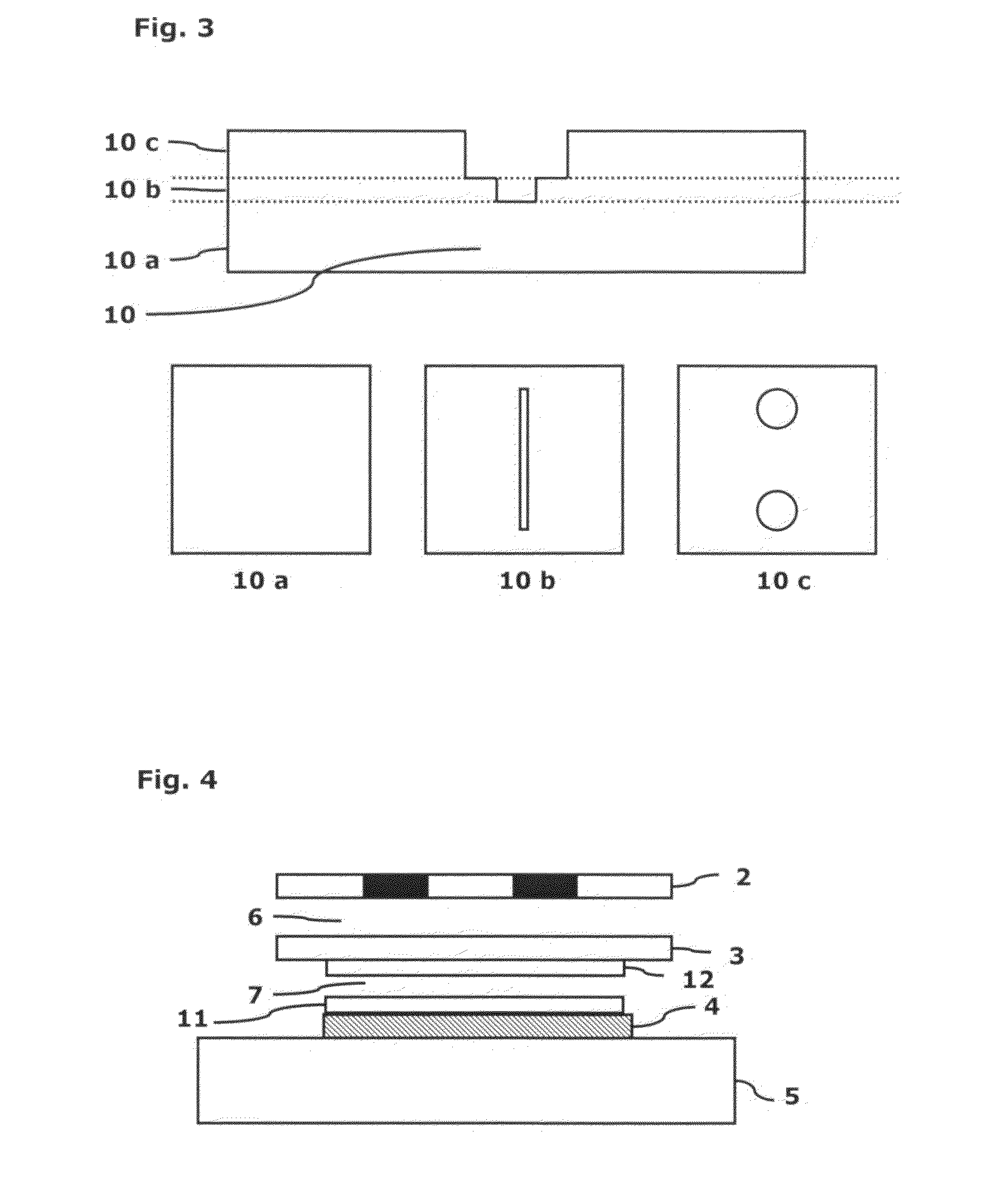Polymeric microfluidic devices from liquid thermoset precursors
- Summary
- Abstract
- Description
- Claims
- Application Information
AI Technical Summary
Benefits of technology
Problems solved by technology
Method used
Image
Examples
example 1
[0086]A typical liquid polymer precursor is composed of 1% w / w hydroxycyclohexyl phenyl ketone (Irgacure 184, CIBA, Tarrytown, N.Y.) and 0.5% w / w is an arylsulfonium salt (UVI 6976, Dow, Midland, Mich.) as the photoinitiators, in a mixture of 30% (wt / wt) triethyleneglycol diacrylate (Sartomer, Exton, Pa.), 30% hexavinyl aromatic urethane acrylate (EBECRYL 220, Sartomer) and 40% 3,4-Epoxycyclohexylmethyl-3,4-Epoxycyclohexane Carboxylate (UVR 6110, Dow, Midland, Mich.).
[0087]Typically, to fabricate a single micro and macro patterned polymeric device layer, a glass substrate is placed on the substrate platform of a fabrication machine and held in position with an underpressure distributed in channels machined on the surface of the substrate platform. A photomask is placed in a frame placed above the fabrication assembly and a transparent glass plate (Borofloat, Schott Scientific, Germany) is placed in a frame positioned between the photomask and the substrate. This glass plate is held ...
example 2
[0089]Multilayer devices are fabricated in the same manner as above, with a first layer following the process of Example 1. Layer two utilizes the first layer as a substrate and alignment between features on the first layer and the photomask used for the second layer is ensured using optical or other means and microscrews to move the mask and the fabrication area relative to one another.
example 3
[0090]Multilayer devices with undercuts are fabricated in the same manner as Example 2 until the point where the undercut is reached. The layer that forms the top portion of the undercut is fabricated separately using the transparent plate as the substrate. Turning the transparent plate upside down and securing it in the fabrication machine affords a sandwich like structure where the top is positioned on the contact side of the transparent plate and the bottom portion of the device is positioned on the substrate. A thin layer of liquid polymer precursor consisting solely of TEGDA is applied between the two polymeric portions, a light pressure, where the compressive force is recorded via a sensor, is applied to ensure proper contact between the plates, and the assembly is illuminated for 5-30 seconds to ensure that active species on both polymeric portions polymerize the TEGDA where the portions are in contact / very close proximity. The device is finished similarly to Example 1.
PUM
| Property | Measurement | Unit |
|---|---|---|
| Thickness | aaaaa | aaaaa |
| Transparency | aaaaa | aaaaa |
| Reactivity | aaaaa | aaaaa |
Abstract
Description
Claims
Application Information
 Login to View More
Login to View More - R&D
- Intellectual Property
- Life Sciences
- Materials
- Tech Scout
- Unparalleled Data Quality
- Higher Quality Content
- 60% Fewer Hallucinations
Browse by: Latest US Patents, China's latest patents, Technical Efficacy Thesaurus, Application Domain, Technology Topic, Popular Technical Reports.
© 2025 PatSnap. All rights reserved.Legal|Privacy policy|Modern Slavery Act Transparency Statement|Sitemap|About US| Contact US: help@patsnap.com



